Earlier this year, I wrote about the beauty of income investing, which I have been doing it for the past decade. My first love though is growth investing and it is still something I enjoy a lot now.
Maybe I should say I thought I was doing growth investing. Looking back now, I would say most of the earlier success stories came from value stocks or cyclical stocks, and luck played a big part in others. It is not that these businesses do not grow but often there is a limit to their total addressable market or they are more sensitive to the ebb and flow of the economy. Hence, very few can continue to increase their revenue and profit for long period of time.
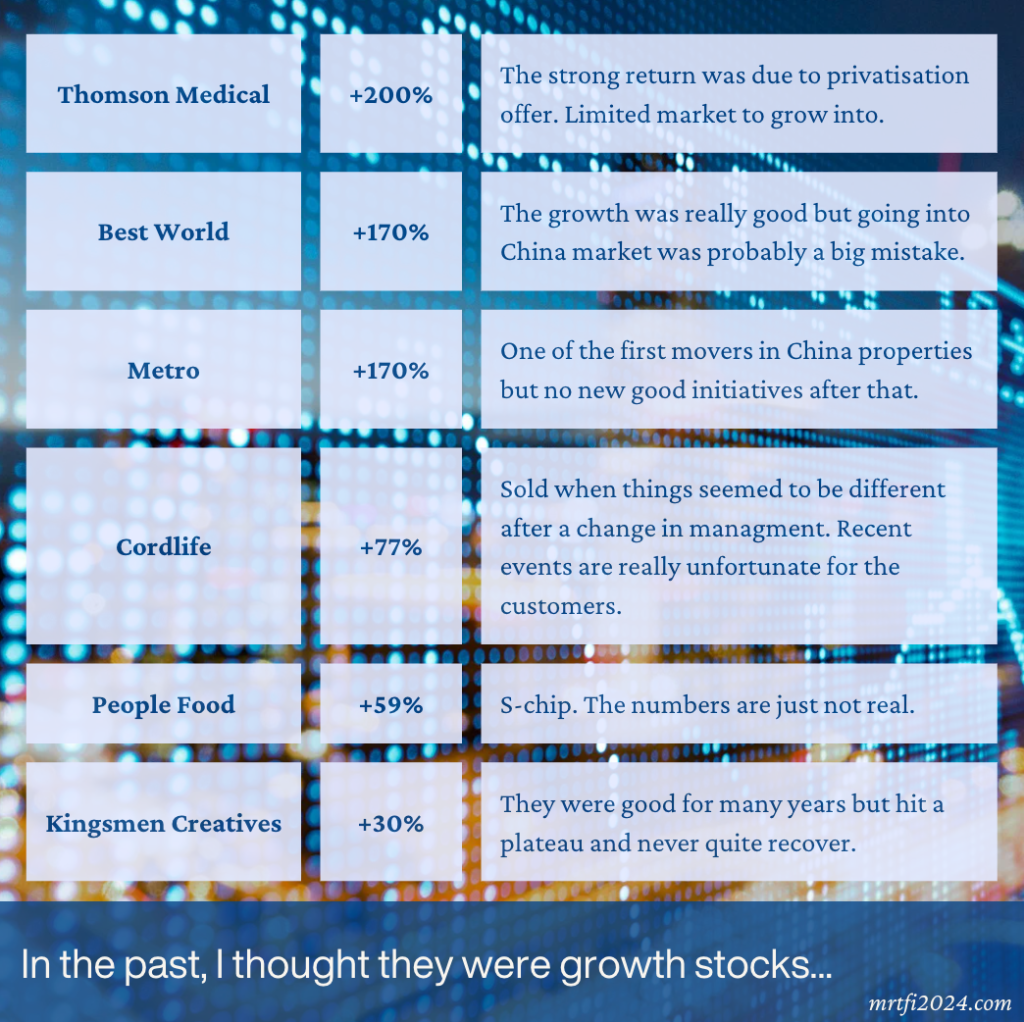
The above are examples of some Singapore companies that I had invested in and made good money in the past. Looking at where the companies are now, I was lucky that I came out of these positions unscathed. Having said that, when I invested in them then, their numbers did look very good and there was potential for further growth. But somehow things just did not work out for them. They do not have a product or service or maybe the right leadership that allow them to continue to grow.
It does not mean one cannot make money from value or cyclical stocks. In fact, catching the turnaround does give a lucrative return. AEM provides a good example of this, which unfortunately I did not catch it. If one was able to catch the turnaround in this business by end of 2016, then the investment would have grown by more than 3,000% after 5 years! Even if one only invested in it by end 2017, the return by end 2022 is still a good 500%.
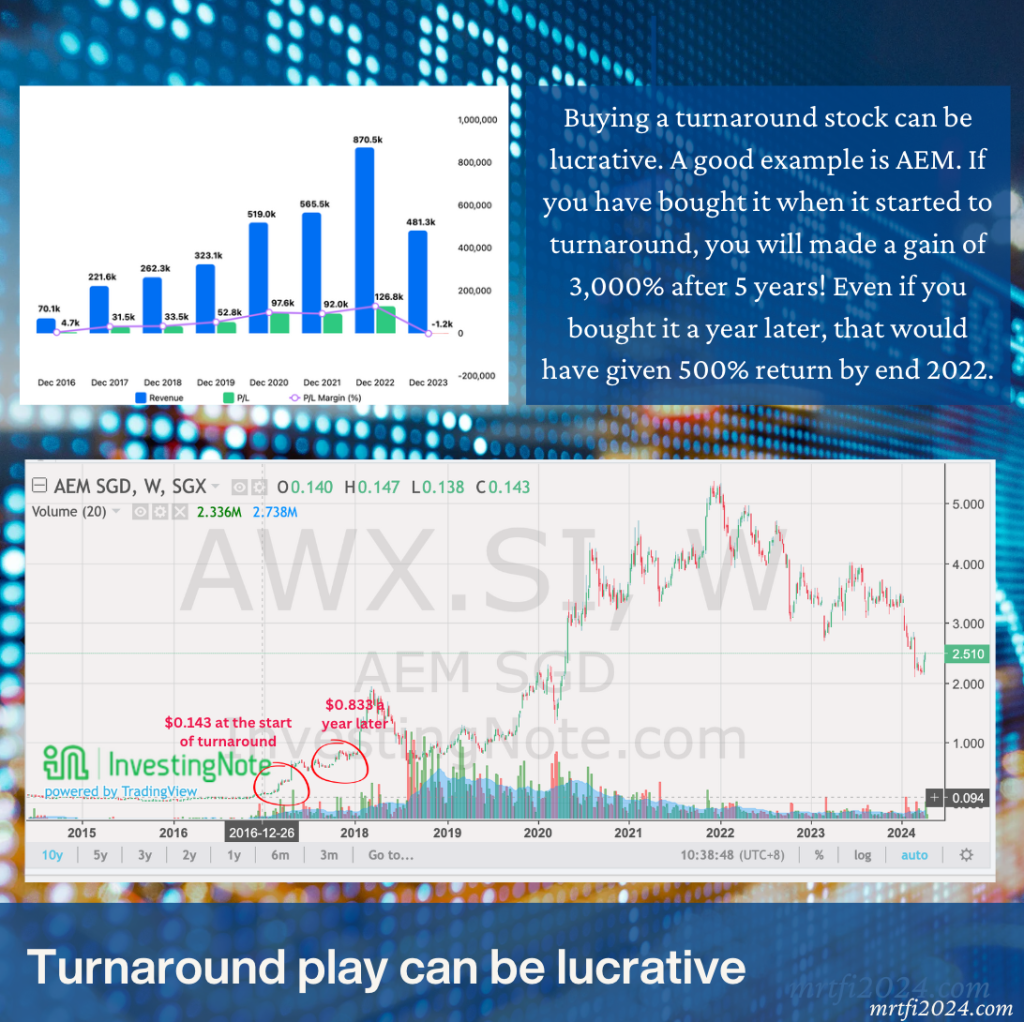
However, as seen from the above image, at the end of the up cycle, both revenue and profit will drop. For AEM, it went into loss due to two separate one-off events. This of course will have an impact on the stock price too. So while cyclical business can bring lucrative return, one need to follow their cycle closely.
How do growth companies differ?
Growth companies typically can grow both their top lines and bottom lines over a long period of time. These companies typically have growing total addressable market due to their innovative products or exceptional services.
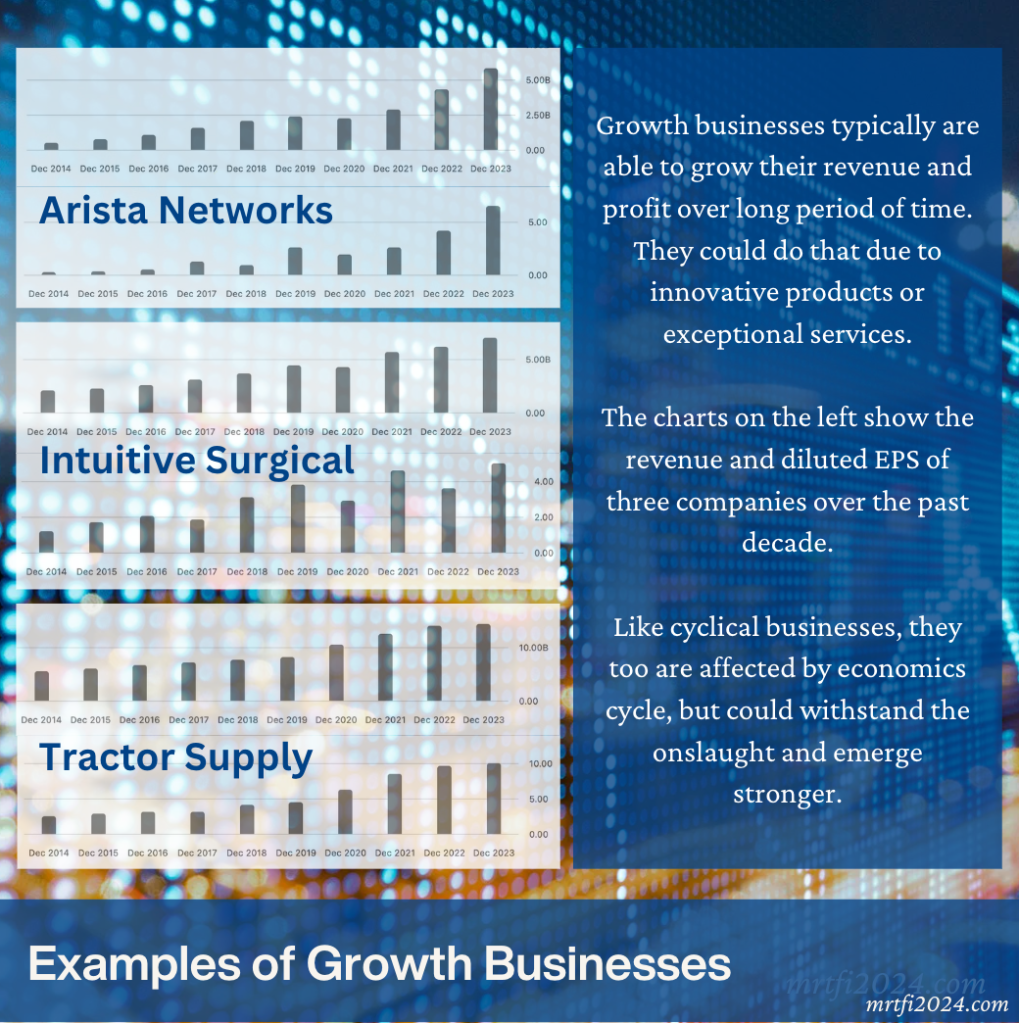
I have chosen three counters in my portfolio to show their historical revenues and diluted earning per share. And you can see that while certain years the revenue and EPS might stagnate or drop, they trend upwards over the longer term.
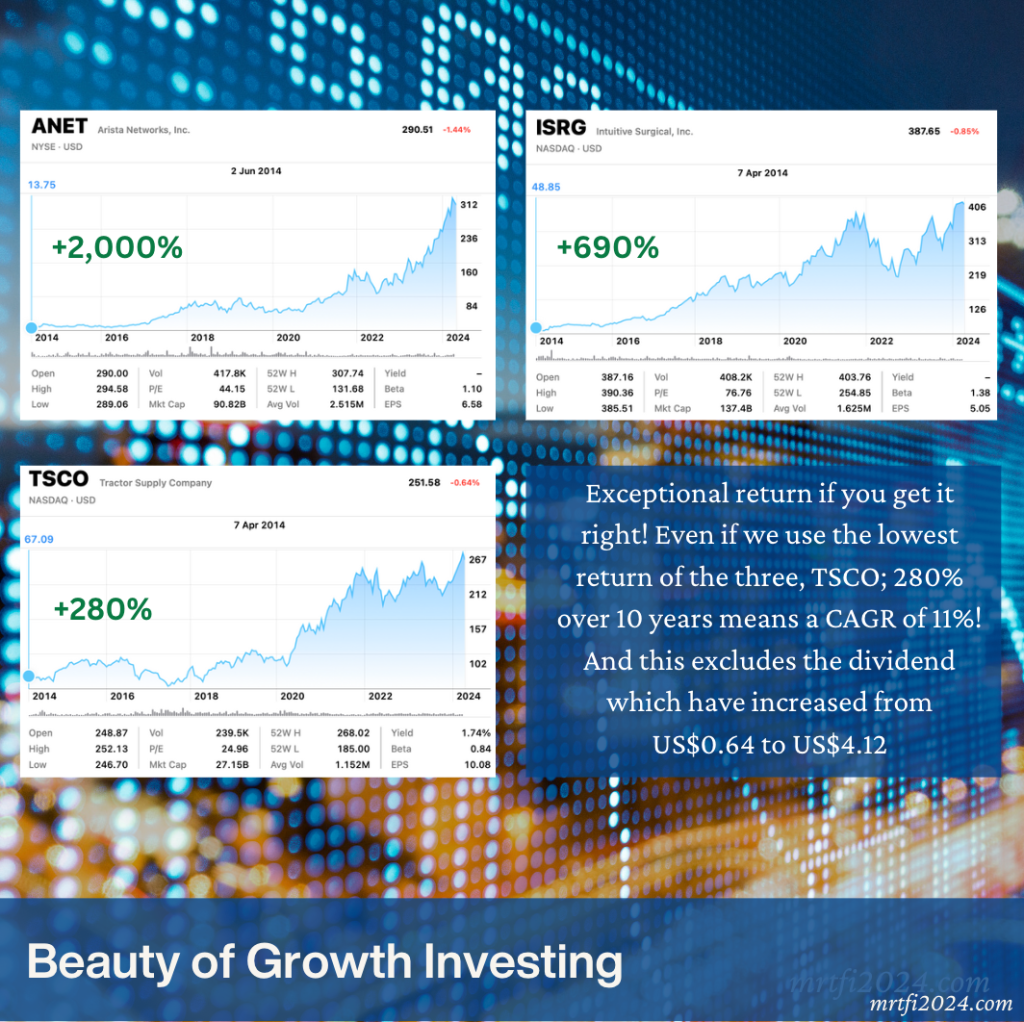
Invest in the correct companies and holding them for the long term give exceptional return. That’s the beauty of growth investing. If one had invested $10,000 in ISRG 10 years ago, it will have become $79,000 now! It is satisfying to see the business I invest in growing. Beyond the return, it feels good if their products or services have a positive impact to the society.
By the way, I did not invest in them 10 years ago. I only ventured into the US markets 5 years ago.
Just invest in growth companies?
Growth investing does look very attractive. However, do note that all the examples I provided thus far are from hindsights. When I invested in ANET, ISRG and TSCO 5 years ago, did I know that their businesses will continue to grow, resulting in the price appreciation?
Like what my son would say at times, “No, I don’t.”
A risk in investing in growth companies is paying a premium for its growth. Hence, any misstep in their execution, resulting in a weaker performance or one that does not meet the market’s expectation, the share price would plummet. From the above charts, you can see many moments where the price plunged for one reason or another.
So to invest in growth companies, one would need to spend the necessary effort and time to know the business, so as to have the conviction to hold on to them over the long term. Also, just because a company is doing well, it doesn’t necessary translate to price appreciation any time soon.
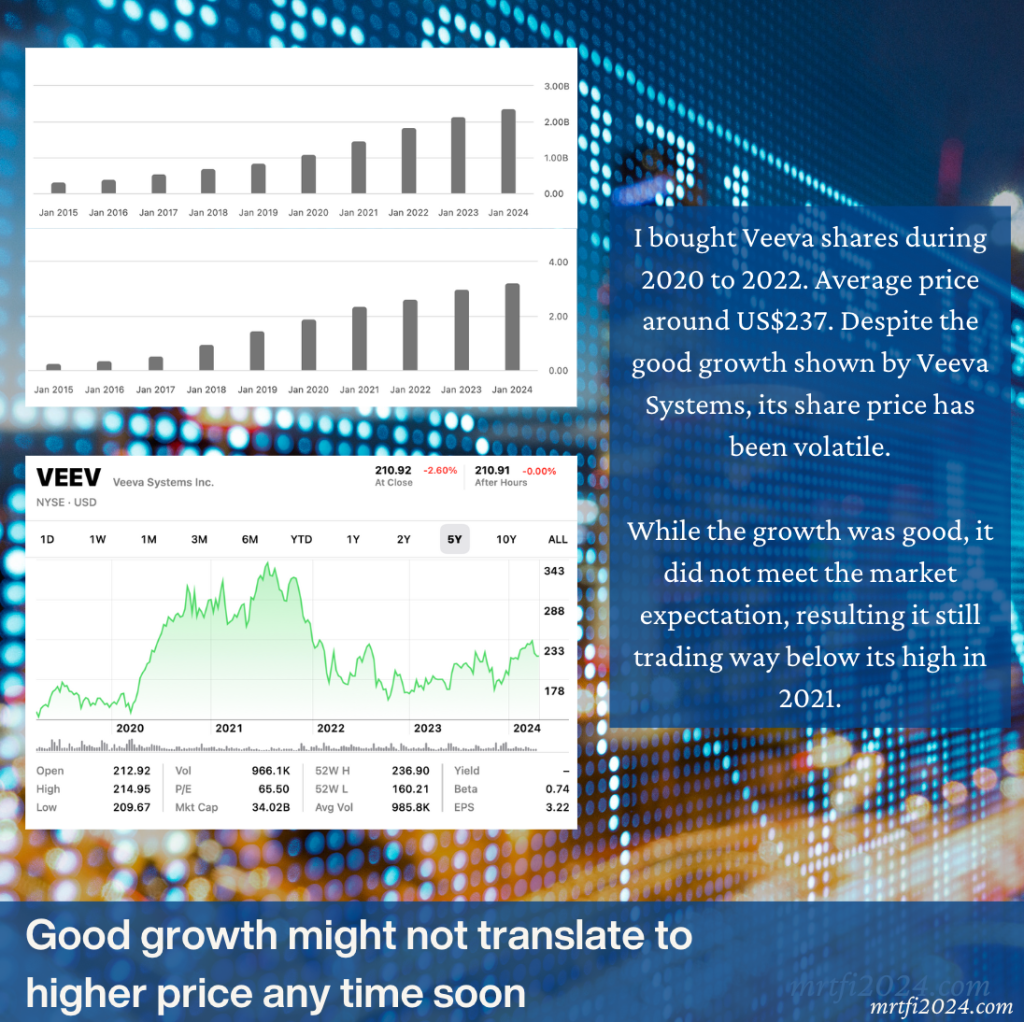
An example of a growth stock in my portfolio that is still in the red is Veeva Systems. I probably was over optimistic about its potential during the pandemic period and overpaid for some of my buys. While the company was able to grow its revenue and EPS, the growth rate did not meet the market’s expectation, causing the price to plunge late 2021. I still think it is a good growth business and the reward would probably come later.
Finally, unlike income counters, growth stocks do not usually declare dividends. This is so as profit is re-invested back to the business for further growth and US companies in general prefer to do shares buyback. Hence, it is much harder to ensure regular cash flow from growth investing as it is necessary to sell the shares to realise the profit.
Ignore the “Tyranny of the OR” and “Embrace the Genius of the AND”. We do not need to choose between income investing or growth investing.
We can have a portfolio that consists of both growth AND income counters.
